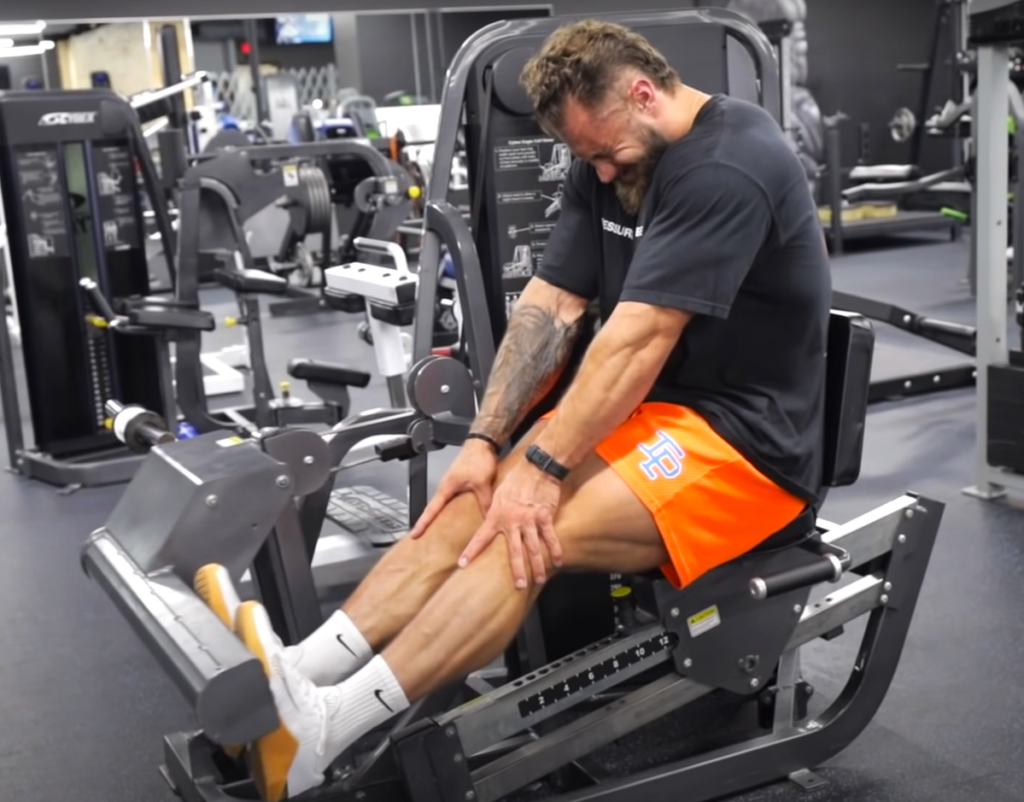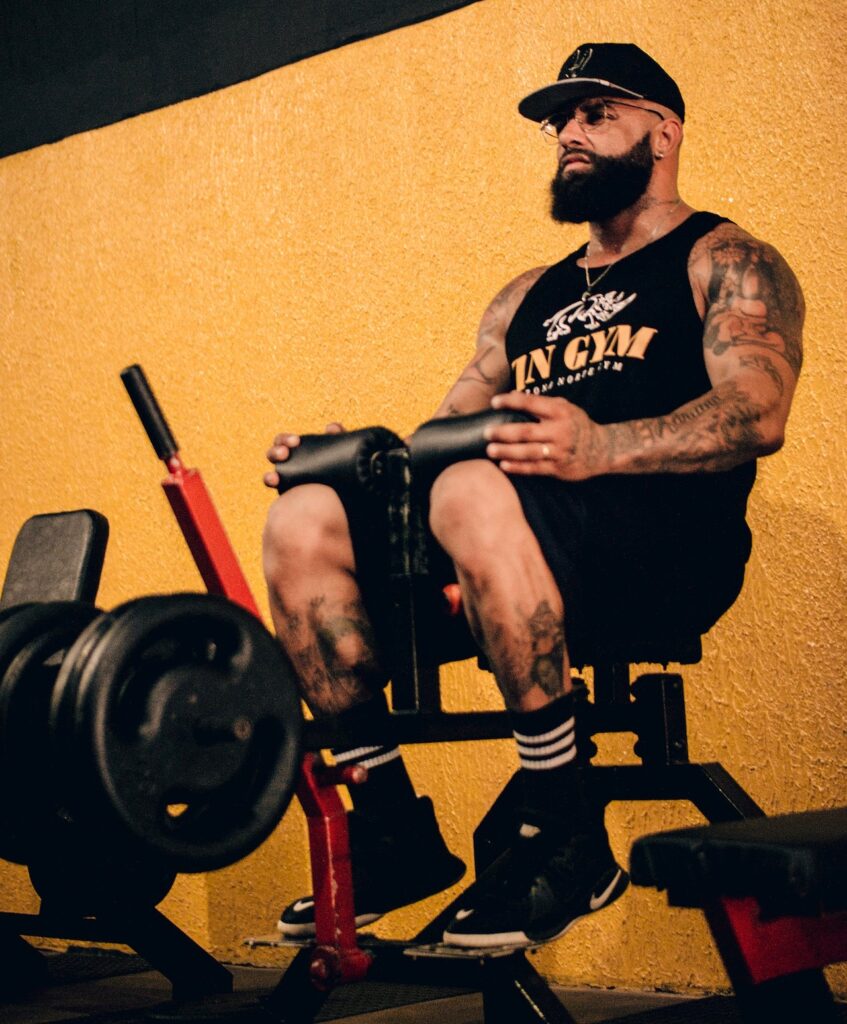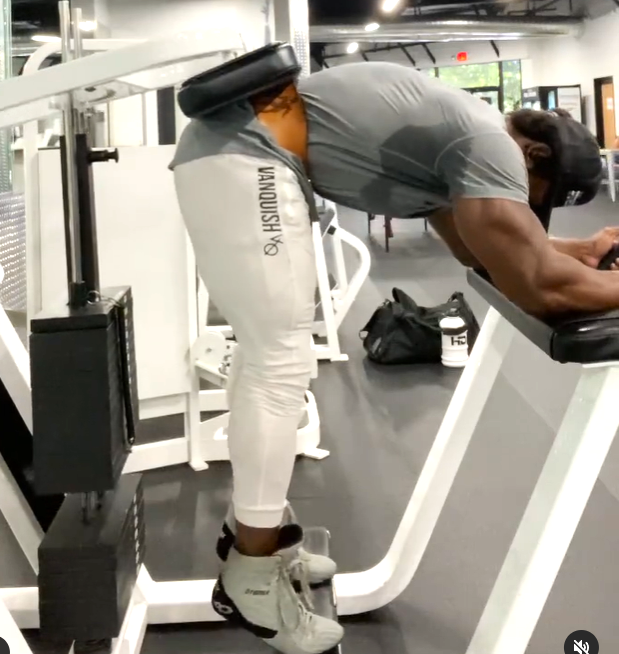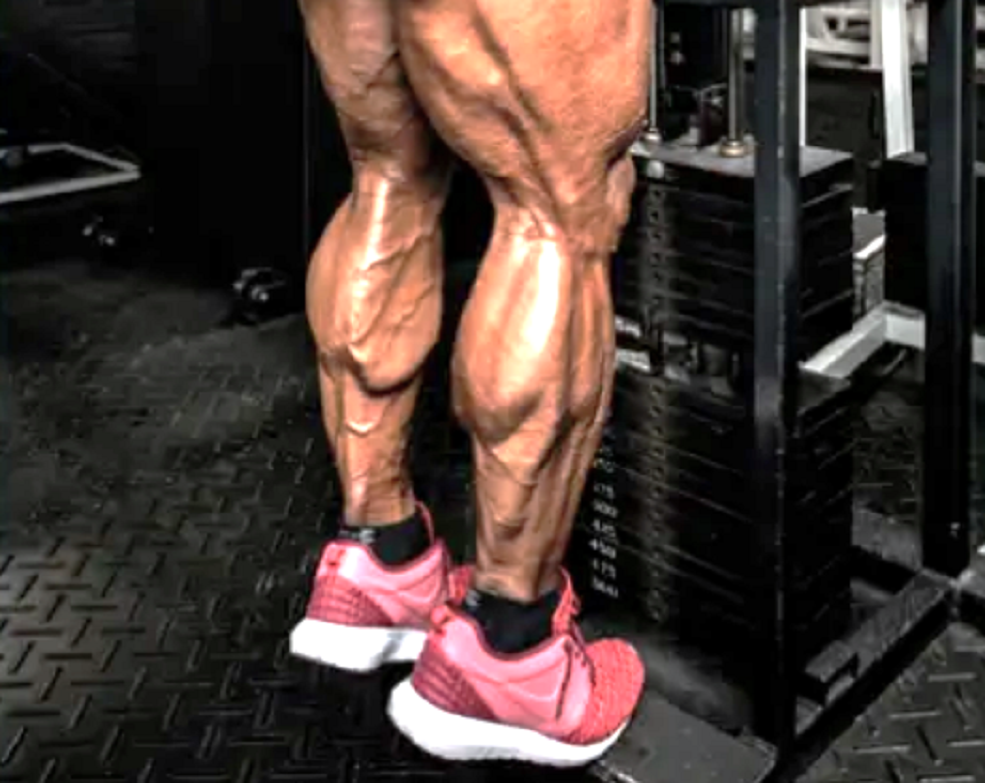Standing calf raise
You’re probably doing too much for calves. It’s not often that research upends convention workout wisdom, but that’s just what happened with a new study that compared the calf growth of those who did standing raises with one leg and seated raises with the other. It turns out there’s one very clear winner. The victor may not surprise you, but it’ll probably surprise you how much it won by. Should you even do the losing exercise? We explore the best calf exercises and make sense of new research comparing the efficacy of standing calf raises and seated calf raises.
STANDING VS. SEATED STUDY
Let’s delve into a study that’s so new it hasn’t even been published yet. (Hat tip to exercise scientist Dr. Milo Wolf, PhD, for bringing it to our attention.) The researchers measured the calf muscle mass of 14 untrained adults before and after the 12-week study. During the 12 weeks, each subject performed one-legged calf exercises twice weekly. One leg was kept straight for 5 sets of 10 reps (with 70% of their one-rep max) in the 24 workouts. The other leg was bent at 90-degrees, also for 5 sets of 10 reps for those 24 workouts. So, one exercise approximates a standing calf raise, the other a seated calf raise. Before and after the study, MRI scans were done to assess the muscle volume of the three calf muscles—lateral gastrocnemius, medial gastrocnemius, and soleus—as well as the muscle volume of all three together.

As predicted, growth in the gastrocnemius was significantly greater in the standing calf raise leg than the seated calf raise leg. It broke down like this:
◼️ lateral gastrocnemius: 12.4% vs. 1.7% (7.3 times greater growth from standing vs. seated)
◼️ medial gastrocnemius: 9.2% vs. 0.6% (15.3 times greater growth from standing vs. seated)
Okay, that’s dramatic (11.3 times better in total), but the seated calf raise is a soleus exercise. So we turn to the soleus, and comparing standing to seated, the results were:
◼️ soleus: 2.1% vs. 2.9% (1.4% times greater growth from seated vs. standing)
And there is the surprising result. While the gastrocnemius does virtually nothing during straight-leg calf exercises, the soleus is working hard during not just bent-leg calf exercises but also straight-leg calf exercises.

When we look at the total calf mass growth, comparing standing to seated, the results were:
◼️ calf mass: 5.6% vs. 2.1% (2.7 times greater growth from standing vs. seated)
LONGER-MUSCLE LENGTH TRAINING
Dr. Wolf wrote about the results:
This study added further credence to the idea that longer-muscle length training leads to more muscle growth than shorter-muscle length training. However, this idea is nothing new. This study represents the ninth study that has compared the same range of motion, performed at shorter- vs. longer-muscle lengths, and measured hypertrophy. Out of nine studies—including this one—eight have found greater hypertrophy when training at longer muscle lengths, whereas the ninth hasn’t found a difference.
While some questions remain as to whether this principle generalizes to all muscle groups or all populations, if you’re seeking to maximize muscle growth, you likely need to be emphasizing the lengthened position in your training. This could be achieved through selecting exercises that target the stretched position, the use of partial repetitions in the lengthened position, or many other tools.
When your legs are straight, as during a standing calf raise, your calves are in their longer-muscle length position. What’s more, they’re at their longest when fully stretched (heels in the down position). When your legs are bent, as during a seated calf raise, your calves are in their shorter-muscle length position.
BEST CALF EXERCISES
The best calf exercises are those in which your legs are straight. This could be a standing calf raise, but it could also be a calf press, donkey calf raise, angled calf raise, or any similar lift with knees locked or nearly locked. Make certain you get a full stretch on every rep. Though longer-muscle length training can focus on partial reps from fully stretched to halfway, the range of motion of calf raises is so short (and calves are so accustomed to short ranges of motion, i.e. walking), we recommend getting a full stretch and full contraction on each rep. Hold both the maximum stretch and maximum contraction for at least two seconds per rep.

But what about seated calf raises? Because standing calf raises are nearly three times better at generating lower leg growth, and over 11 times better at growing the gastrocnemius, and do only a little worst job of growing the soleus (which is much smaller and less visible than the gastrocnemius), do only straight-leg calf raises if you do only one calf exercise. If you do two calf exercises, you can do seated, but for maximum growth it still might be the best strategy to choose two straight-leg calf exercises. If you do seated, we recommend always favoring straight-leg (longer-muscle) calf exercises with much more workout volume than seated (shorter-muscle) raises. Aim for 2-3 times as many sets of straight-leg raises as bent-leg raises.
With that in mind, here are two routines that include seated calf raises:
8-SET BEST CALF EXERCISE ROUTINE
Standing Calf Raise — 6 sets x 10-12 reps
Seated Calf Raise — 2 sets x 10-12 reps
12-SET BEST CALF EXERCISE ROUTINE
Standing Calf Raise — 5 sets x 10-12 reps
Seated Calf Raise — 3 sets x 10-12 reps
Calf Press — 4 sets x 12-15 reps
BEST CALF EXERCISES: CONCLUSION
The research on superior muscle growth from longer-muscle length training has been revolutionary in recent years. If your goal is maximizing hypertrophy, it should be a major focus of your training. And now we know it applies to calf training too. Because one way of training is nearly three times better for muscle growth than the other, you should be doing many more sets of the superior method. Straight-leg calf exercises and bent-leg calf exercises are not equal, so don’t do them in equal amounts. For overall lower leg size, standing calf raises and their equivalents are significantly better than seated seated calf raises. Take a stand: Do more of what works best and less of what doesn’t work as well.
Related content:
















































